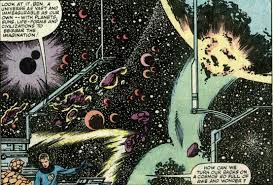Has it ever happened to you? An idea hits you, seemingly out of the blue, as the best ideas always do–unasked for, unplanned.
You feel excited, energized, eager to get started. You don’t have your story all figured out yet, but you don’t care. Who needs an outline? You have a situation. You have a set of characters. Most important of all, you have a need to get this boiling, rushing volcanic river of creativity down on paper (or on the computer screen, as the case may be). You feel you’ll explode if you keep it locked away inside of you.
You have a story to tell. And you want to share it with the world.
There are few things more exhilarating than this in the life of a writer. One moment, there is nothing, but then, in the next . . .
Maybe you’re between projects. Maybe you’ve been in a slump. Or maybe you’ve been on a roll, your creative powers at an all-time high. It doesn’t matter either way, because when this new idea strikes, you feel as though you could spread your arms, catch an updraft, and soar for miles.
You begin the story, the keyboard humming along, the words pouring out of you so fast, your fingers are having trouble keeping up. But at some point, perhaps a paragraph in, perhaps thousands of words in, it hits you.
You don’t have a title. You are writing a story “Untitled.”
What to do?
********************
When I began writing The Eye-Dancers, it wasn’t called The Eye-Dancers. It wasn’t called anything. It seemed as if I had the necessary ingredients in place to come up with an attention-grabbing title. I had ghost girls and nightmares and endless blue voids, and worlds upon worlds, without end. Why was the title so difficult to get right?
I tried a few. Pathways through Infinity. Ugh. Journey without End. Double ugh! Not to mention misleading. There is, in fact, an end. Through Time and Space. Putrid! It sounded like a B movie from the 1950s. So I did the only thing I could. I forgot about what to call the novel, and continued to write it.
It wasn’t really a surprise that a title didn’t stick initially. They rarely do for me. Even with short stories, I often do not think of a title until after the story is written. But with The Eye-Dancers, it grated on me. A short story, after all, can be completed in a day or two. It doesn’t compare with the months-long marathon of writing a novel. And as I reached 30,000 words in my ever-growing manuscript, and then 40,000, and then 50,000 . . . I started to become concerned. What if I never thought of a title? How could I publish a book with no name?
I tried force-feeding a few more would-be titles, but these were even worse than the first batch. (Hard to believe, but true.) So I plugged away and kept writing, and then . . . when I came to the final segment of the novel, Mitchell Brant, that weaver of tales and stories himself, helped me to solve the puzzle.
Earlier in the novel, when the boys are first transported through the void, via the swirling, hypnotic blue eyes of the “ghost girl,” Mitchell has the sense that they are dancing, or, more specifically, “eye-dancing.” At the time, I never really considered that the makings of a book title were contained in those words. (When you are tone deaf with titles, as I sometimes am, these things can take time!)
Thankfully, Mitchell bailed me out. In the epilogue, Mitchell again uses the term “eye-dancing” to describe the dimension-busting adventure he and his friends have experienced. This time, the lightbulb went off! I had it.
The Eye-Dancers.
It was perfect. It fit the story. It had a catchy, mysterious sound to it–it was evocative . . . I liked it.
It just took a long time coming.
**********************
The more I think about it, the more I believe a title should come late in the game.
Writing a novel is like wandering through a maze, with lush, leafy ivy growing from the walls, ten feet high. Just when you think you know the direction the story will travel, it does a sudden U-turn, then fakes right and goes left, taking you, the author, along for the wild, unpredictable ride. This is why I don’t use chapter-by-chapter outlines. I know the flux and flow of the narrative will change as I dive in. The original conception will become a relic, a barnacle-covered shipwreck lying 3,000 fathoms beneath the sea.
Why, then, worry about a title at the beginning? If you have a title, and you’re sure it will work, great. That’s one less thing to concern yourself with. But if you’re not sure, or completely in the dark, rest assured that your characters, your story, will ultimately provide the answer.
Some of my favorite novel titles include: To Kill a Mockingbird, The Sound and the Fury, Far from the Madding Crowd, and The Grapes of Wrath.
Each one creates an instant mood and paints a word-picture and metaphor all its own. Concerning the first three, I am unaware of how or at what point during the writing process they came to be (though I would be surprised if they materialized early on). As for John Steinbeck, he struggled mightily to come up with a suitable title for his book, and only arrived at The Grapes of Wrath after his wife suggested it.
***********************
I am currently working on a sequel to The Eye-Dancers. What will I call it? At the moment, I haven’t a clue. I’ll leave that to the roller-coaster ride of the story itself, with its ebbs and flows and sudden, unexpected turnabouts. And its characters.
They will provide a title for me at some point.
I’m counting on it.
Thanks so much for reading!
–Mike



























































































